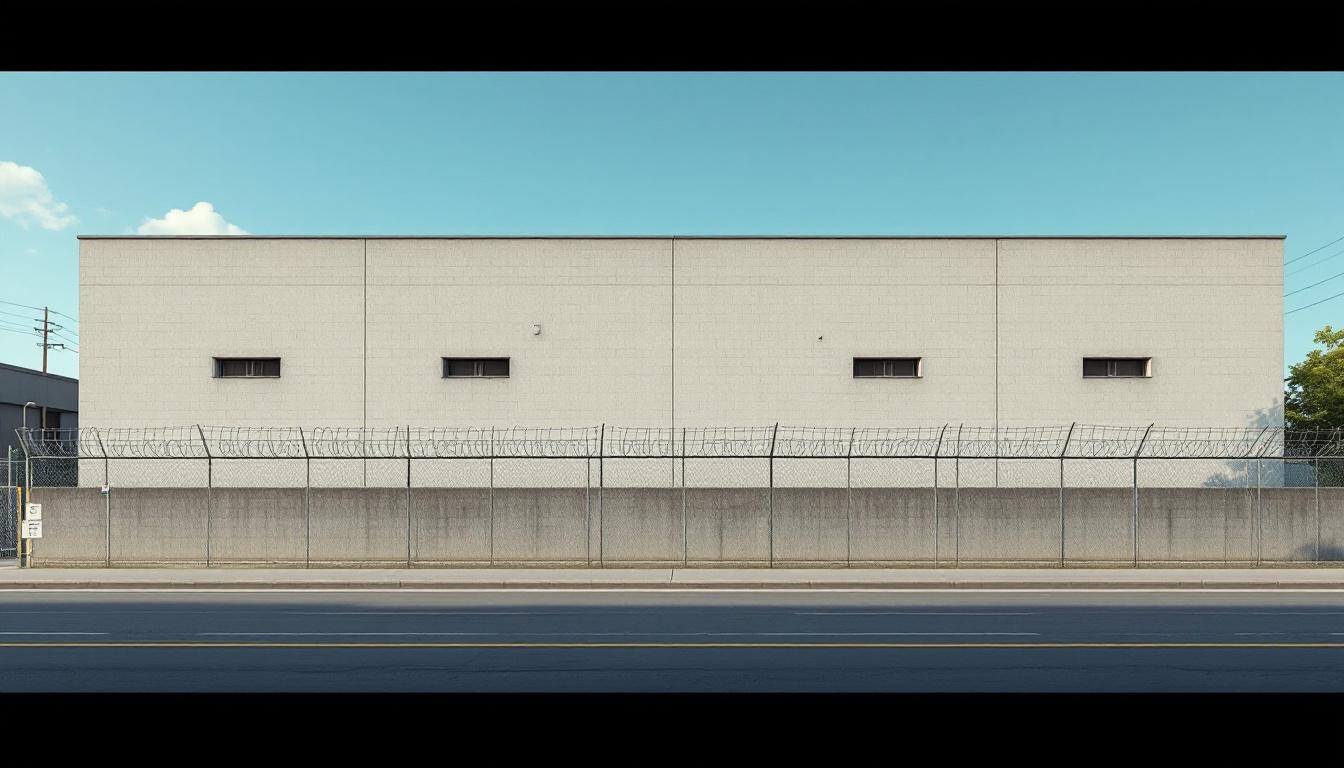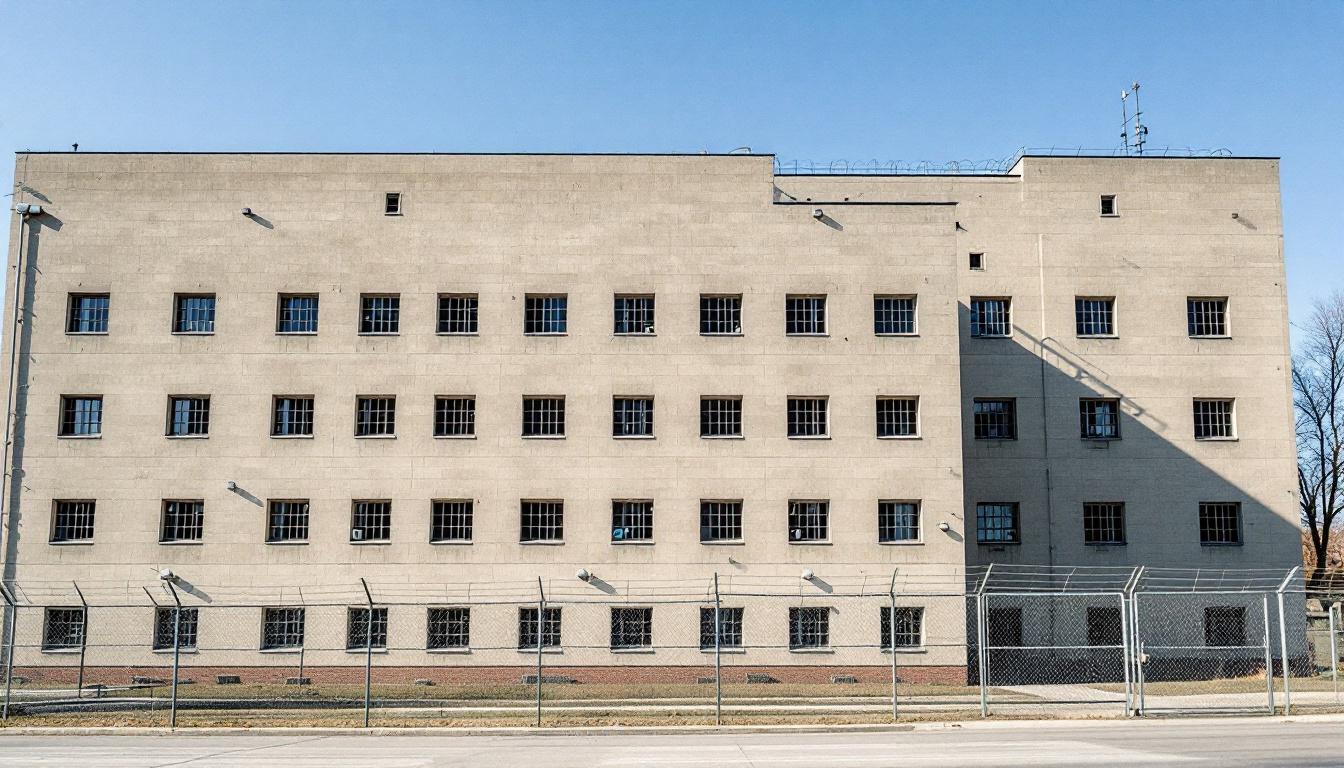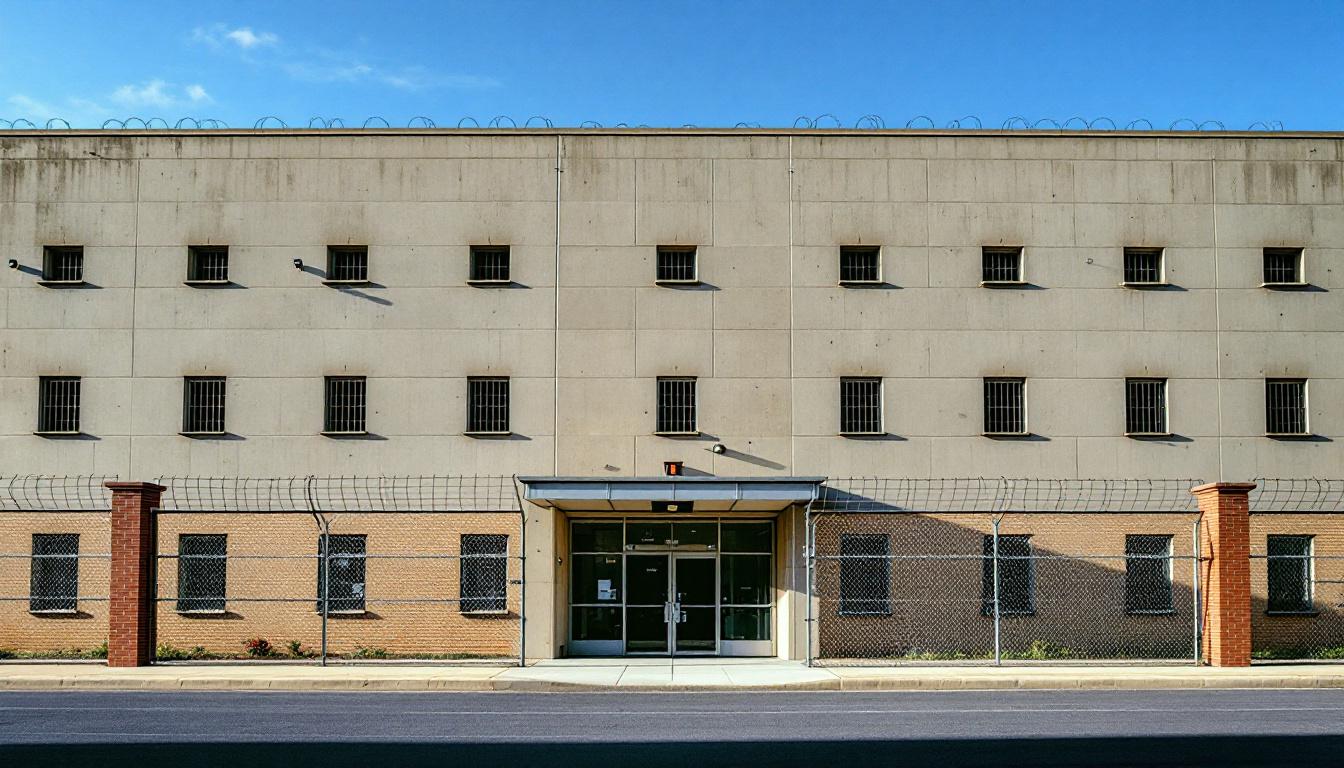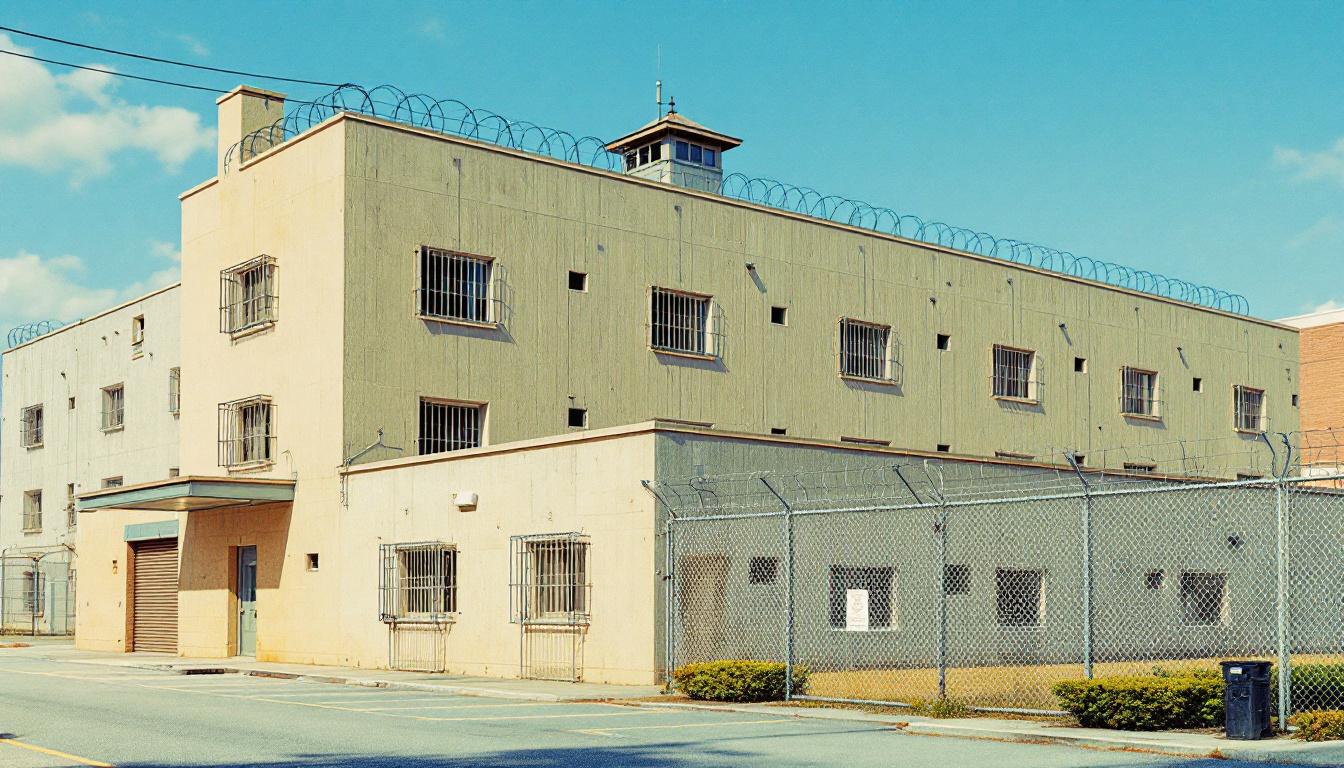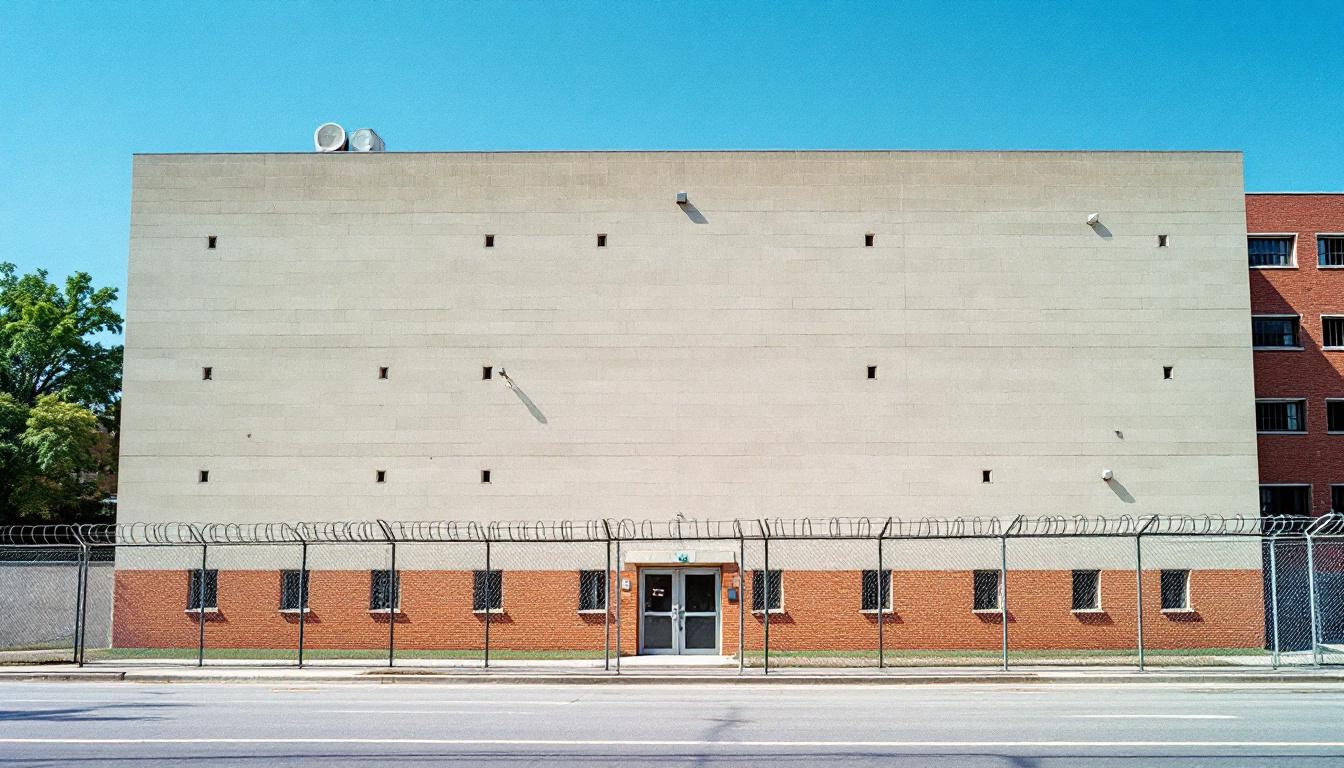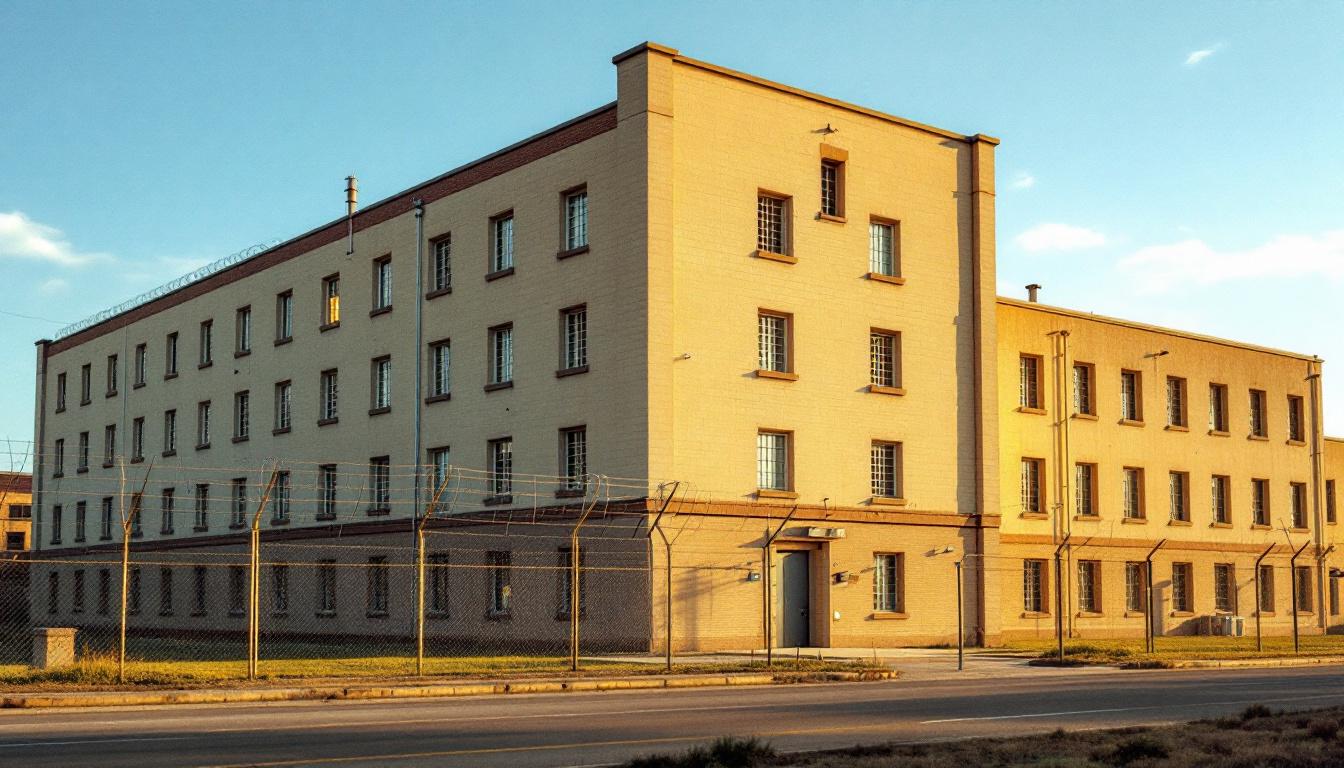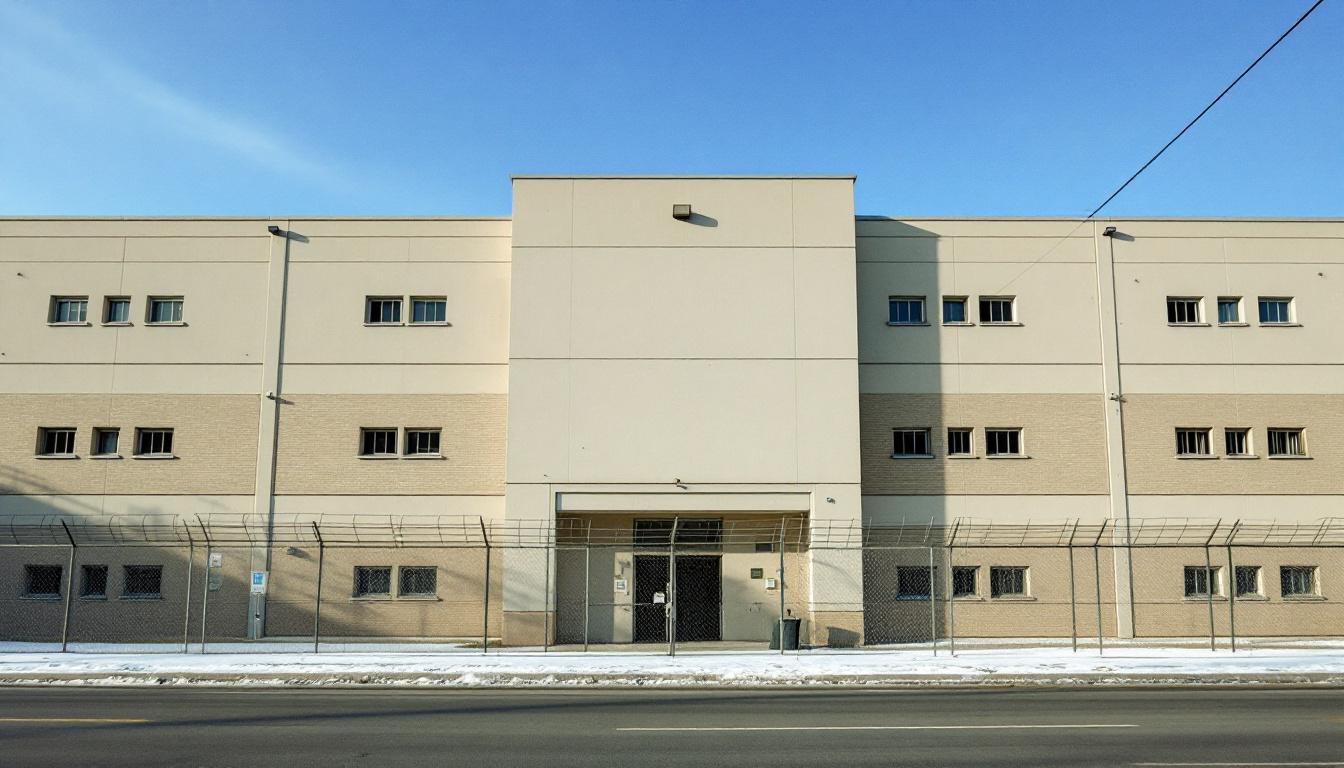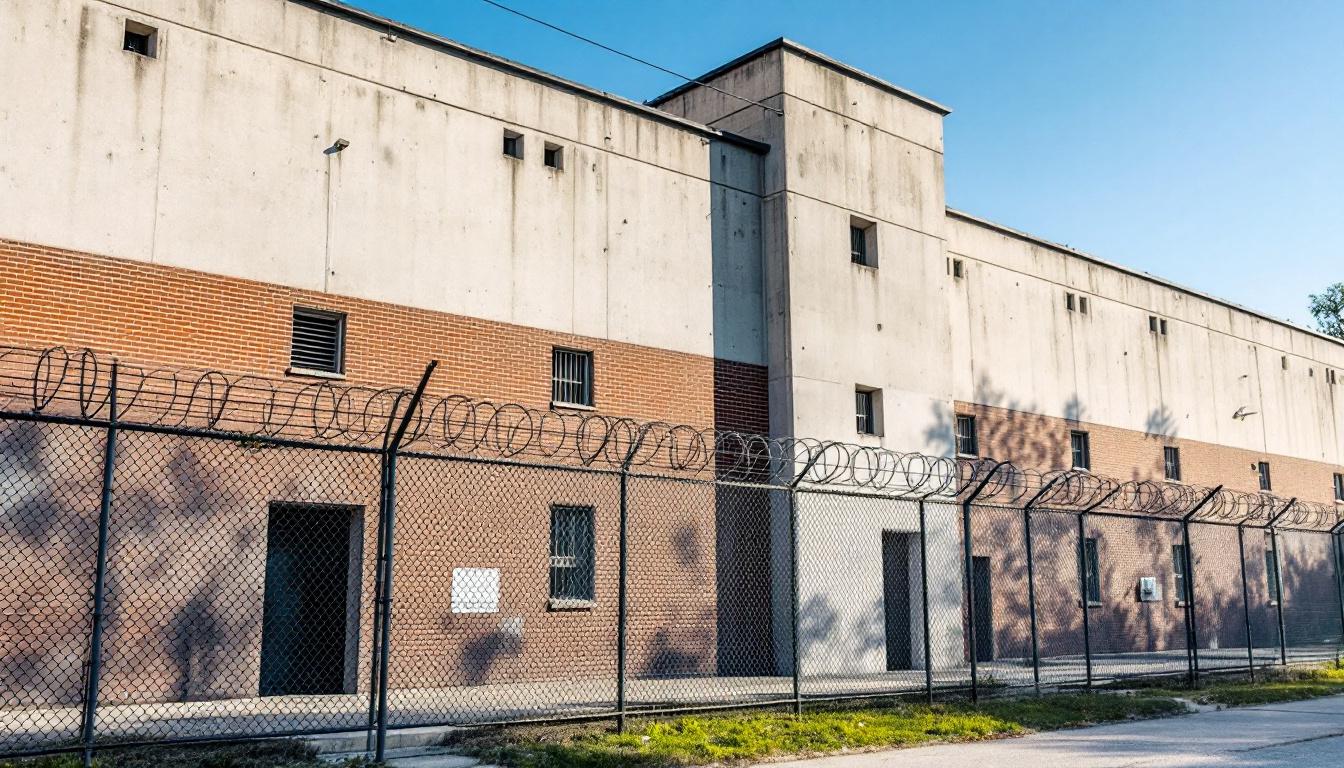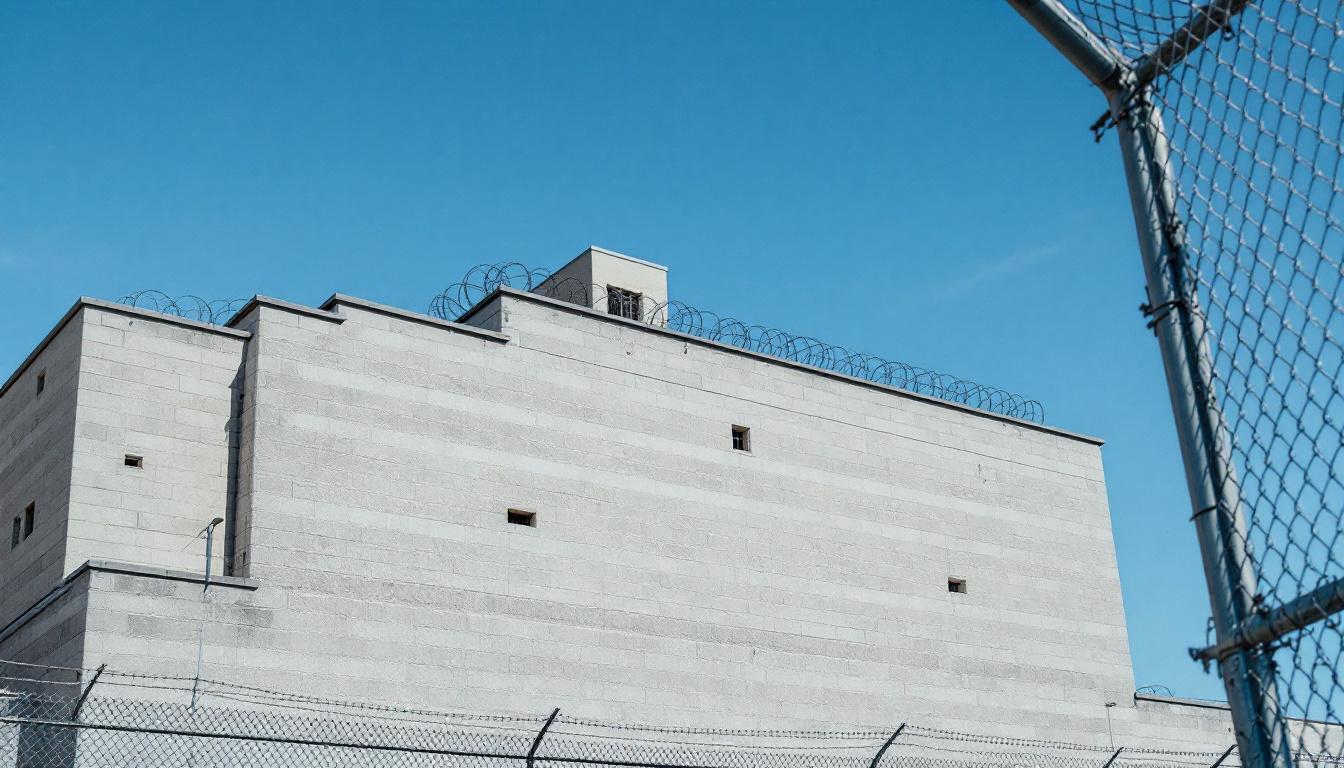
Quick Navigation
How to contact an inmate at Orange County Correctional Facility
This comprehensive guide will walk you through how to connect with an inmate at Orange County Correctional Facility. Follow the steps below to find an inmate and send letters and photos:
- Search for the inmate using our search tool below
- Create your account or log in to Penmate
- Write your message (up to 6,000 characters)
- Send instantly - inmates receive printed copies daily
Find an Inmate
Search for an inmate to start communicating today
Tip: You can search by first name, last name, or inmate ID number
To contact a person at Orange County Correctional Facility start by searching for the person on the official facility website. Perform a search by following these steps:
- Step 1: Enter their first name and last name into the search form and click "Search"
- Step 2: Locate their inmate record
- Step 3: Write down their Inmate ID and any housing information provided
Important! Be sure to enter the person's full name. Nicknames should not be used.
How to Send Messages to Inmates

You can use your phone or computer to send emails, letters, and photos to an inmate. Messages are sent electronically to inmate tablets or kiosks at the facility. If you would like to send a message, start by searching for an inmate at Orange County Correctional Facility.
Sending Photos and Postcards

A great way to send love and support to a loved one at Orange County Correctional Facility is to send photos and postcards. It only takes a few minutes to send photos from your phone and it makes a huge difference. You can also mail postcards with words of support and inspiration, or design your own postcard for special moments like birthdays and holidays.
Important! Be sure not to send any explicit photos or they may not be approved by the facility. You can also use a photo printing app like Penmate to make sure your photos are printed at the correct size (4x6 or 3x5) and are mailed according to the rules and regulations of Orange County Correctional Facility.
Frequently asked questions about Orange County Correctional Facility
-
How long does it take to deliver a message?
If you're sending an email message your letter is usually delivered within 24-48 hours. For messages sent via mail you should expect delivery within 3-7 days. All messages will need be approved by Orange County Correctional Facility.
-
How much does it cost to send a message to Orange County Correctional Facility?
You can send a message free using your phone or mail a message via USPS for the price of a $0.60 stamp and envelope. You can also purchase credits or e-stamps from services starting at $1.99.
-
What services can I use to contact an inmate at Orange County Correctional Facility?
Penmate
You can use Penmate to send letters and photos to an inmate from your phone. It's an easy way to stay in touch during your loved one's incarceration. Use the inmate locator to find an inmate's location and contact information, then you can send messages within a few minutes.
Securus messaging
Securus may be another option for communicating with an inmate at Orange County Correctional Facility. You can create a friends and family account and purchase credits to send messages. All messages will be reviewed and must be approved by the facility.
JPay
Some county jails and state prisons may support sending messages with JPay. You must register an account with the system, find your loved one, and purchase stamps to send messages. For some locations you can also attach photos.
Smart Jail Mail
You may also check if Smart Jail Mail is available at Orange County Correctional Facility. Smart Jail Mail is operated by Smart Communications and has contracted with some state and county jails. After purchasing credits, your messages and photos are sent to the facility, printed out, and then handed out to your loved one.
-
What is the mailing address of Orange County Correctional Facility?
Mailing address:
Orange County Correctional Facility
110 Wells Farm Rd
Goshen, NY 10924
Phone: (845) 291-4033Business hours:
- Monday: 7:00 AM – 2:00 PM
- Tuesday: Closed
- Wednesday: Closed
- Thursday: 7:00 AM – 2:00 PM
- Friday: 7:00 AM – 2:00 PM
- Saturday: 7:00 AM – 2:00 PM
- Sunday: 7:00 AM – 2:00 PM
-
What are the visiting hours at Orange County Correctional Facility?
Visiting hours at Orange County Correctional Facility vary by housing unit and security level. Generally, visits are scheduled on weekends and holidays, with some facilities offering weekday visits. Contact the facility directly at (845) 291-4033 or check their website for the current visiting schedule. Visits typically last 30-60 minutes and must be scheduled in advance.
-
What items are prohibited when sending mail to Orange County Correctional Facility?
Prohibited items typically include: cash, personal checks, stamps, stickers, glitter, glue, tape, staples, paperclips, polaroid photos, musical or blank greeting cards, hardcover books, magazines with staples, and any items containing metal or electronics. Only send letters on plain white paper with blue or black ink. Photos must be printed on regular photo paper (no Polaroids). Always check with Orange County Correctional Facility for their specific mail policies.
-
How do I send money to an inmate at Orange County Correctional Facility?
You can send money to an inmate at Orange County Correctional Facility through several methods: 1) Online using JPay, Access Corrections, or the facility's approved vendor, 2) Money orders mailed directly to the facility with the inmate's name and ID number, 3) Kiosks located in the facility lobby, or 4) Over the phone using a credit or debit card. Fees vary by method, typically ranging from $2.95 to $11.95 per transaction.
-
Can I schedule a video visit with an inmate at Orange County Correctional Facility?
Many facilities now offer video visitation as an alternative to in-person visits. At Orange County Correctional Facility, video visits may be available through services like Penmate, Securus Video Connect, GTL, or ICSolutions. Video visits typically cost $10-20 for 20-30 minutes and must be scheduled in advance. You'll need a computer or smartphone with a camera and reliable internet connection. Contact the facility for their specific video visitation policies and approved vendors.
-
What identification do I need to visit an inmate at Orange County Correctional Facility?
All visitors must present valid government-issued photo identification such as a driver's license, state ID, passport, or military ID. Minors must be accompanied by a parent or legal guardian who can provide the minor's birth certificate. Some facilities require visitors to be on the inmate's approved visitation list, which may require a background check. Contact Orange County Correctional Facility for specific ID requirements and visitor approval procedures.
-
How can I find out an inmate's release date?
To find an inmate's release date at Orange County Correctional Facility, you can: 1) Use the online inmate search tool if available, 2) Call the facility's records department, 3) Contact the inmate's case manager or counselor, or 4) Have the inmate provide this information during a call or visit. For privacy reasons, some facilities only release this information to immediate family members.
Facility Overview
Contact Information
Orange County Correctional Facility110 Wells Farm Rd
Goshen, NY 10924
Phone: (845) 291-4033
Official Website
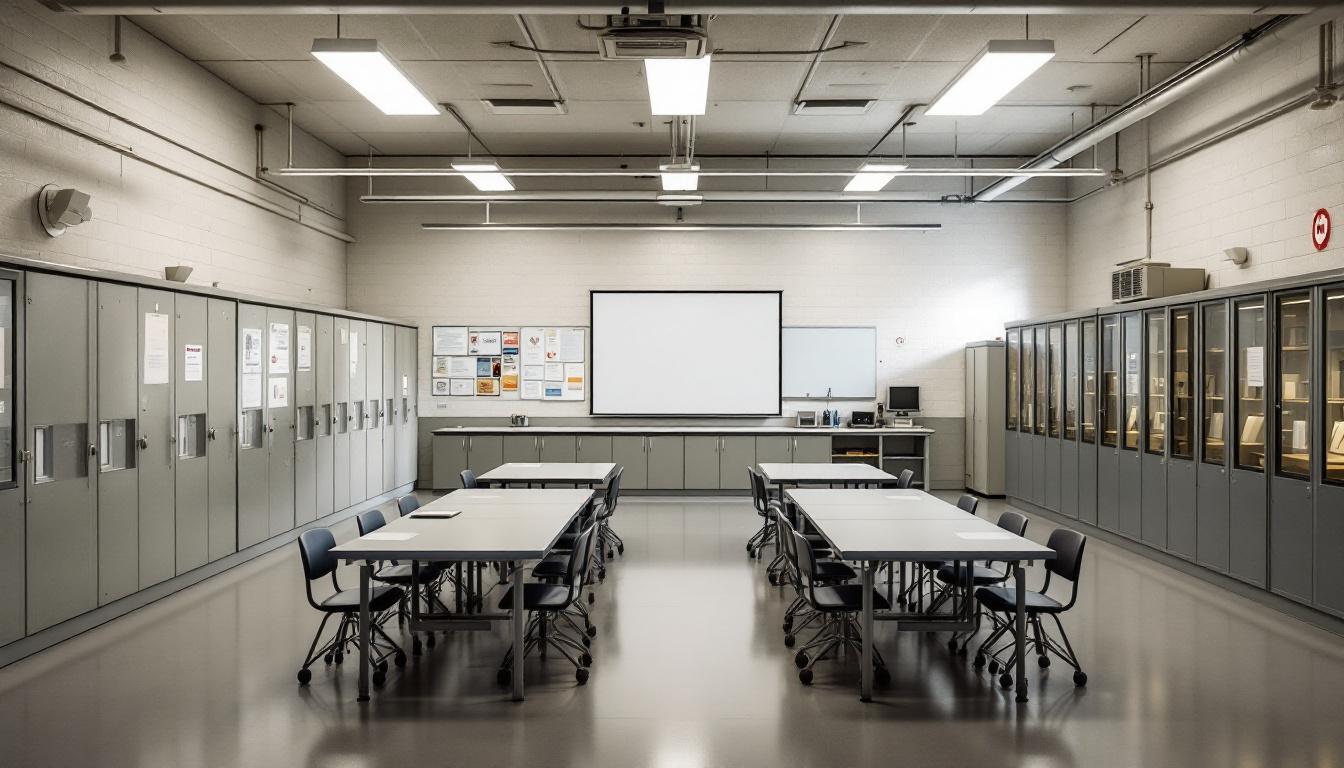
About Orange County Correctional Facility
Within Santa Ana's diverse community landscape, residents and families rely on comprehensive correctional services that bridge local needs with broader state objectives. Orange County Jail operates as a central processing hub where booking procedures, classification assessments, and initial program placements work systematically to address both immediate custody requirements and longer-term rehabilitation goals. This CA correctional facility typically manages the complex workflow of intake processing, court transportation coordination, and pre-trial detention services while maintaining connections to California's wider network of correctional resources and community-based support systems.
The facility's operational framework generally aligns with state correctional goals through structured programming approaches that may include educational assessments, substance abuse screening, and mental health evaluations during the detention process. Located in the heart of Orange County, the jail typically serves as a critical link between arrest and either release or transfer to other correctional institutions, with inmates services often encompassing basic medical care, legal consultation access, and family communication opportunities. This county jail environment generally emphasizes systematic case management processes that support both individual needs and public safety objectives within the Pacific region's broader correctional landscape.
Through its integration with state and local agencies, the facility often provides transitional planning services that may connect individuals with community resources, employment assistance programs, and ongoing support networks upon release. The Santa Ana location typically facilitates coordination between various stakeholders including courts, probation services, and community organizations, creating pathways that support successful reintegration while maintaining accountability to both residents and the broader Orange County community.
Programs & Services
Personal transformation within the correctional environment begins with comprehensive services designed to address the multifaceted needs of inmates seeking meaningful change. Orange County Jail's approach to rehabilitation emphasizes the development of practical skills, educational advancement, and psychological well-being through carefully structured programming. This holistic framework recognizes that sustainable reintegration into society requires more than temporary confinement—it demands intentional investment in human potential and the cultivation of tools necessary for long-term success.
Educational initiatives typically form the cornerstone of personal development efforts, offering inmates opportunities to pursue academic advancement through various learning pathways. These services may provide basic literacy instruction, high school equivalency preparation, and continuing education options that address diverse educational backgrounds and career aspirations. In addition to this academic foundation, vocational training services often include specialized instruction in trades such as masonry and other construction-related skills, equipping participants with marketable abilities that enhance employment prospects upon release. Such hands-on learning experiences combine theoretical knowledge with practical application, fostering both competence and confidence in professional settings.
Support services encompass a broad spectrum of therapeutic and spiritual resources designed to address underlying issues that may contribute to criminal behavior. Rehabilitation programs typically focus on substance abuse treatment, anger management, and cognitive behavioral interventions that help inmates develop healthier coping mechanisms and decision-making skills. Chaplaincy programs often provide spiritual guidance and counseling, offering inmates opportunities for reflection, forgiveness, and moral development within their faith traditions. Furthermore, community resource connections may facilitate linkages to external support networks, housing assistance, and employment services, creating bridges between incarceration and successful community reintegration that extend well beyond the facility walls.
Daily Life & Visitation

The concrete walls and fluorescent lighting of the housing units create a stark environment where inmates at Orange County Jail must quickly learn to navigate the rhythms of institutional life. At present, the facility actively maintains structured daily schedules that begin early in the morning with headcounts and continue through regulated meal times, recreation periods, and evening lockdown procedures. Inmates typically adapt by establishing personal routines within the confines of the institutional schedule, finding ways to maintain dignity and purpose despite the challenging circumstances.
Living accommodations generally consist of shared cells or dormitory-style housing units, where inmates may be housed with one or more cellmates depending on classification levels and facility capacity. Personal space becomes precious in these confined quarters, and inmates often develop unwritten rules about respecting each other's limited belongings and sleeping areas. The facility typically provides basic necessities including bedding, hygiene items, and institutional clothing, while inmates may purchase additional comfort items through the commissary system when funds are available from family support or facility work assignments.
In addition to this basic structure, the facility usually provides various programs and activities designed to provide meaningful engagement during incarceration. Recreation time may include access to outdoor yards, gymnasium facilities, or dayrooms where inmates can watch television, play games, or socialize within supervised settings. Work assignments often include kitchen duties, laundry services, or facility maintenance tasks that provide modest compensation and help inmates maintain productive routines. Despite this institutional environment, family connections remain vital through scheduled visitation periods, telephone access, and mail correspondence, helping inmates maintain important relationships that support their eventual reintegration into the community.
Ready to Connect?
Start communicating with your loved one today
Search for an Inmate
